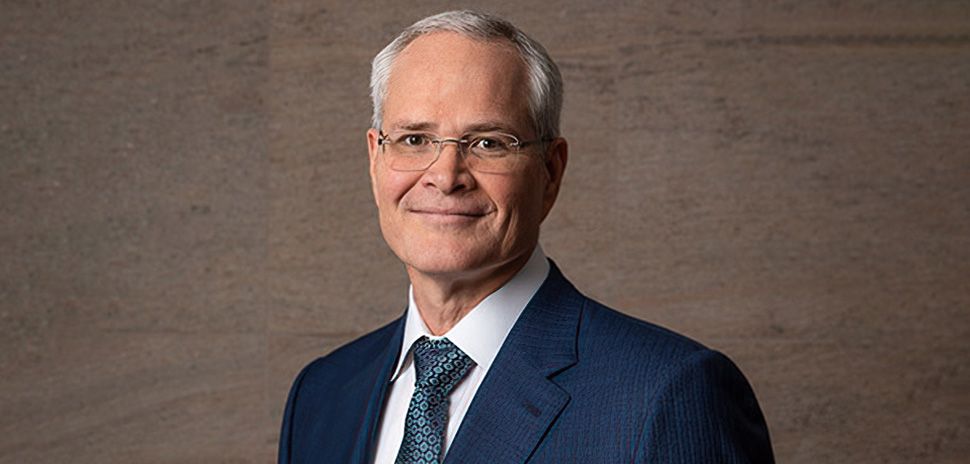Irving-based energy giant ExxonMobil announced its corporate plan for the next five years, including growing its lower-emissions investments to roughly $17 billion.
That’s a sizable increase in investments aimed at emission reductions and accretive lower-emission initiatives, including the company’s Low Carbon Solutions business. The corporate plan through 2027 maintains annual capital expenditures at $20-$25 billion, the company said.
“Our five-year plan is expected to drive leading business outcomes and is a continuation of the path that has delivered industry-leading results in 2022,” Chairman and CEO Darren Woods said in a statement. “We view our success as an ‘and’ equation, one in which we can produce the energy and products society needs – and – be a leader in reducing greenhouse gas emissions from our own operations and also those from other companies. The corporate plan we’re laying out today reflects that view, and the results we’ve seen to date demonstrate that we’re on the right course.”
An emphasis on carbon capture and storage, biofuels, and hydrogen
ExxonMobil said that it has allocated roughly $17 billion on its own emission reductions and accretive third-party lower-emission initiatives through 2027, an increase of almost 15%. Nearly 40% of these investments is directed toward building its lower-emissions business with customers to reduce their greenhouse gas emissions with a primary emphasis on large-scale carbon capture and storage, biofuels, and hydrogen.
Lower-emissions technologies are recognized as necessary solutions to help address climate change and the company said they closely align with its existing competitive advantages and core capabilities.
The balance of the capital will be deployed in support ExxonMobil’s 2030 emission-reduction plans and its 2050 Scope 1 and 2 net-zero ambition. ExxonMobil said that in the Permian Basin, it’s on track with its goal to reach net-zero Scope 1 and 2 emissions from its operated unconventional assets by 2030.
“We’re aggressively working to reduce greenhouse gas emissions from our operations, and our 2030 emission-reduction plans are on track to achieve a 40-50% reduction in upstream greenhouse gas intensity, compared to 2016 levels,” Woods said. “We’ll continue to advocate for clear and consistent government policies that accelerate progress to a lower-emissions future. At the same time, we’ll continue to work to provide solutions that can help customers in other industries reduce their greenhouse gas emissions, especially in higher-emitting sectors of the economy like manufacturing, transportation and power generation.”
Exxon said that its approach prioritizes high-return, low-cost-of-supply assets in the Upstream and product solutions businesses and supports efforts to reduce greenhouse gas emissions intensity from operated assets, as well as those emitted from other companies.
Expecting to double earnings from 2019 to 2027
The company said that the plan is expected to double earnings and cash flow potential by 2027 versus 2019 and supports its strategic priorities that include leading the industry in safety, shareholder returns, earnings and cash flow growth; cost and capital efficiency; and reductions in greenhouse gas emissions intensity.
Exxon said that investments in 2023 are expected to be in the range of $23 billion to $25 billion to help increase supply to meet global demand. It also remains on track to deliver a total of roughly $9 billion in structural cost reductions by year-end 2023 versus 2019, Exxon said.
According to the plan, upstream earnings potential is expected to double by 2027 versus 2019, resulting from investments in high-return, low-cost-of-supply projects.
A global focus
More than 70% of capital investments will be deployed in strategic developments in Texas’ Permian Basin, Guyana, Brazil, and LNG projects around the world. By 2027, upstream production is expected to grow by 500,000 oil-equivalent barrels per day to 4.2 million oil-equivalent barrels per day with more than 50 percent of the total to come from these key growth areas.
Roughly 90% of upstream investments that bring on new oil and flowing gas production are expected to have returns greater than 10% at prices less than or equal to $35 per barrel, while also lowering upstream operated greenhouse gas emissions intensity by 40-50 percent through 2030, compared to 2016 levels, Exxon said.
Near-term Upstream investments are projected to keep production at approximately 3.7 million barrels of oil equivalent per day in 2023 assuming a $60 per barrel Brent price, offsetting the impact of strategic portfolio divestments and the expropriation of Sakhalin-1 in Russia. ExxonMobil Product Solutions said it expects to nearly triple earnings by 2027 versus 2019.
Increased cash flow and earnings enable further net debt reduction and increased shareholder distributions, the company said.
ExxonMobil announced an expansion of its $30 billion share-repurchase program, which is now up to $50 billion through 2024.
![]()
Get on the list.
Dallas Innovates, every day.
Sign up to keep your eye on what’s new and next in Dallas-Fort Worth, every day.

































